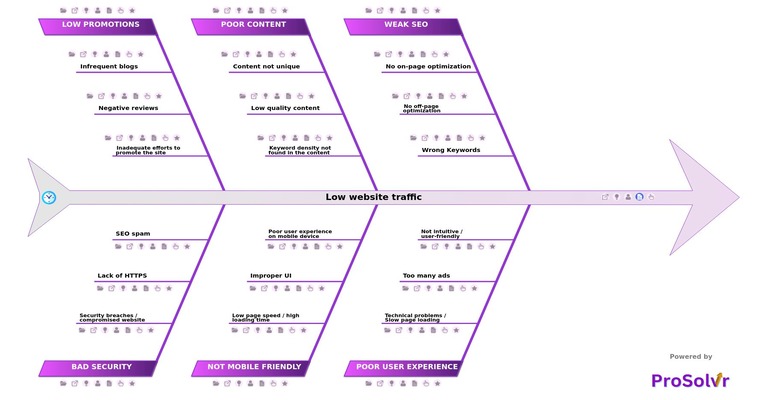Root Cause Analysis of Low Website Traffic
Low website traffic is a common challenge that many businesses face, impacting online visibility, customer engagement, and ultimately, revenue. Understanding the underlying factors contributing to low website traffic is crucial for developing effective strategies to increase site visitors and improve online performance. Several key factors can influence website traffic, ranging from content quality and SEO optimization to user experience and marketing efforts.
Content quality plays a pivotal role in attracting and retaining website visitors. Engaging, relevant, and valuable content can drive organic traffic by appealing to users' interests and providing solutions to their queries. On the other hand, outdated, irrelevant, or low-quality content can deter visitors and negatively impact search engine rankings, further exacerbating traffic issues.
Search engine optimization (SEO) is another critical factor affecting website traffic. Proper SEO practices, including keyword optimization, meta tags, and high-quality backlinks, can significantly improve a website's visibility in search engine results. Conversely, neglecting SEO or using outdated techniques can result in poor search engine rankings, leading to reduced organic traffic.
User experience (UX) and website design also play a vital role in influencing website traffic. A well-designed, user-friendly website that offers intuitive navigation, fast loading times, and mobile responsiveness can enhance user satisfaction and encourage visitors to spend more time on the site. Conversely, a poorly designed website with usability issues can frustrate users and drive them away, contributing to low traffic volumes.
Marketing efforts, including social media promotion, email marketing, and online advertising, are essential for driving targeted traffic to a website. Effective marketing campaigns can increase brand awareness, reach new audiences, and drive traffic from various online channels. Ineffective or inconsistent marketing strategies, on the other hand, can result in missed opportunities and stagnant traffic growth.
In summary, addressing low website traffic requires a multifaceted approach that encompasses content quality, SEO optimization, user experience, and strategic marketing efforts. By identifying and addressing these key areas, businesses can enhance their online visibility, attract more visitors, and ultimately, achieve their online objectives.
Who should use the Low Website Traffic template?
- Business Owners: To understand the potential reasons behind their website's low traffic and take corrective measures.
- Digital Marketers: To analyze website performance and devise strategies to increase traffic.
- Webmasters and SEO Specialists: To identify technical and SEO-related issues affecting website traffic.
- Content Creators: To evaluate the quality and relevance of the content and make necessary improvements.
- E-commerce Businesses: To optimize their online store for better visibility and traffic generation.
- Bloggers: To enhance their blog's performance by addressing common issues that may be impacting traffic.
- Small to Medium-sized Enterprises (SMEs): To improve their online presence and reach a wider audience.
Why use the Low Website Traffic template?
- Identify Issues: The template helps you identify the potential reasons behind your website's low traffic by covering various aspects like SEO, user experience, content quality, and more.
- Prioritize Actions: By categorizing the causes of low traffic, the template helps you prioritize which issues to address first, ensuring a more systematic approach to improving website performance.
- Strategic Planning: It provides a structured framework to analyze and plan strategies for increasing website traffic, allowing you to develop targeted and effective solutions.
- Improve User Experience: By addressing issues related to website design, speed, and usability, you can enhance the overall user experience, encouraging visitors to spend more time on your site and return in the future.
- Optimize Content: The template highlights the importance of content quality, uniqueness, and relevance, guiding you in creating engaging and valuable content that resonates with your target audience.
- Boost SEO Rankings: With insights into on-page and off-page optimization, keyword usage, and backlink strategies, the template helps you optimize your website for search engines, improving visibility and organic traffic.
- Enhance Marketing Efforts: By focusing on promotional activities, including social media, email marketing, and online advertising, the template assists in expanding your reach and attracting new visitors to your site.
- Ensure Security: Addressing security issues like breaches and lack of HTTPS can protect your website and build trust among visitors, contributing to a positive user experience and increased traffic.
The Low Website Traffic template serves as a comprehensive tool to diagnose issues, plan improvements, and implement strategies that can lead to significant growth in website traffic and online performance.
Draft and create a template for problem analysis in ProSolvr by smartQED.
Curated from community experience and public sources:








